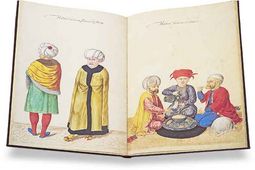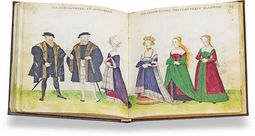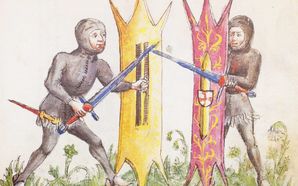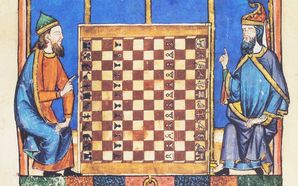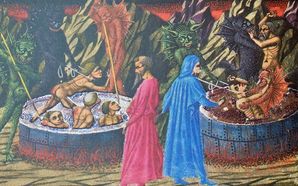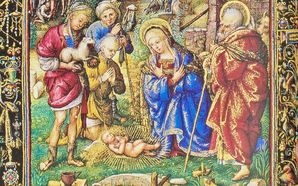Costume Books
Illuminated medieval manuscripts are pregnant with cultural-historical information that is highly prized by professional and amateur historians alike. One of the most interesting insights they offer regards the manner in which people dressed during the Middle Ages. Some manuscripts, by virtue of their image program such as calendar pages from books of hours with labors of the month and other typical scenes from medieval life, coincidentally offer depictions of medieval fashion.
In the Late Middle Ages, works appeared explicitly seeking to document the way people dressed in various regions of the world. So-called “costume books” like the one created by Lambert de Vos concerning the folk costumes of the Ottoman Empire and the Trachtenbuch or Costume Codex created for Emperor Charles V in order to give him an impression of the many peoples of his empire upon which "the sun never set". Works like these and other manuscripts with similar depictions represent some of the most valuable sources of information today for medieval historians and fashion aficionados alike.
Demonstration of a Sample Page
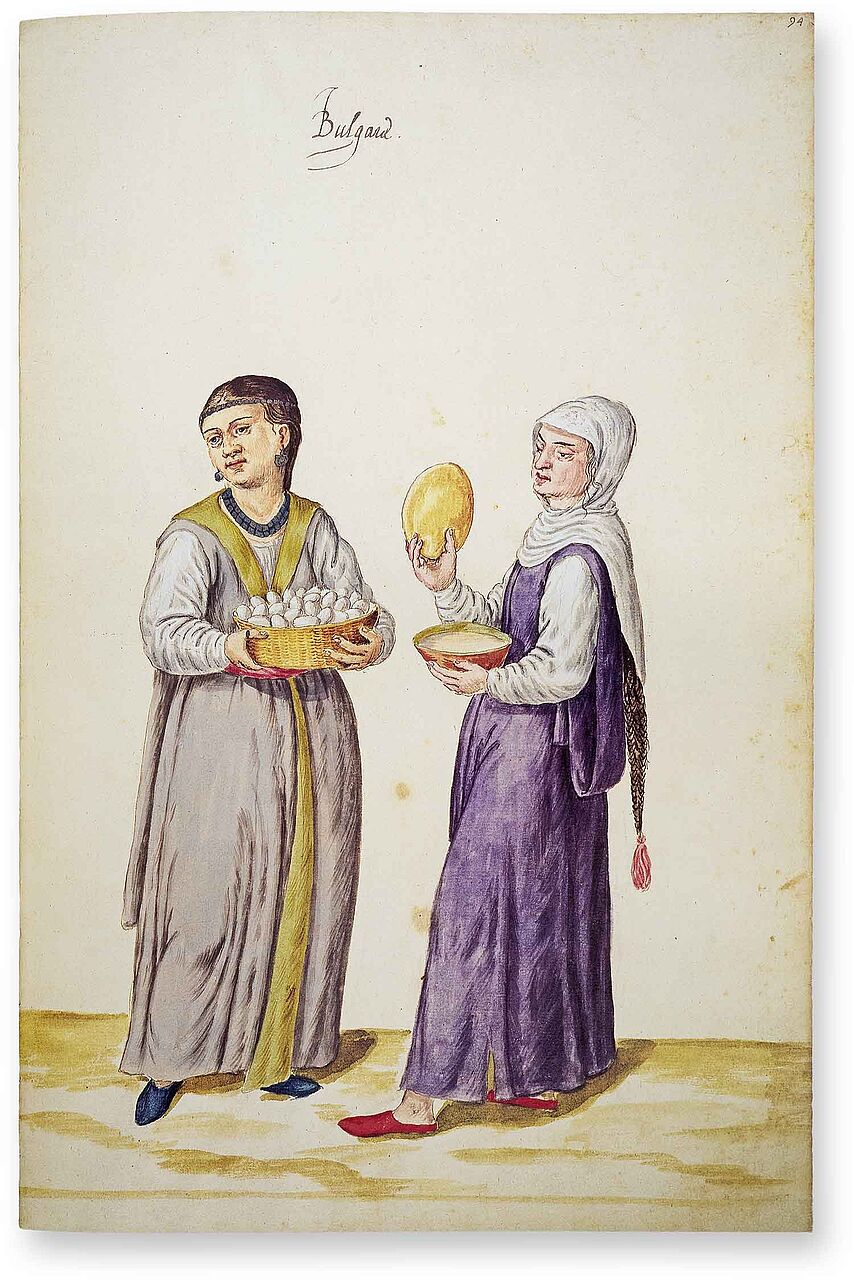
Costume Book of Lambert de Vos
Two Bulgari Women
The Bulgars were a nomadic Turkic people who settled along the steppe of the lower Volga during the 7th century and gradually moved west. They had a complex relationship with the Byzantines, initially acting as some of their greatest allies in the West, but later found themselves to be enemies of Constantinople. Conquered by the Turks in 1396, Bulgaria would not be independent until 1908.
This is a rare depiction of two women in floor-length dresses because they are commoners and Muslims to boot. One is holding a basket of eggs and has a more olive-complexion, while the one holding the flatbread is fairer – a reflection of the polyglot mix of Turkic, Iranian, Slavic, Thracian, Greek, and other peoples living under the Bulgari warrior elite.

